SpaceTelescope
Latest
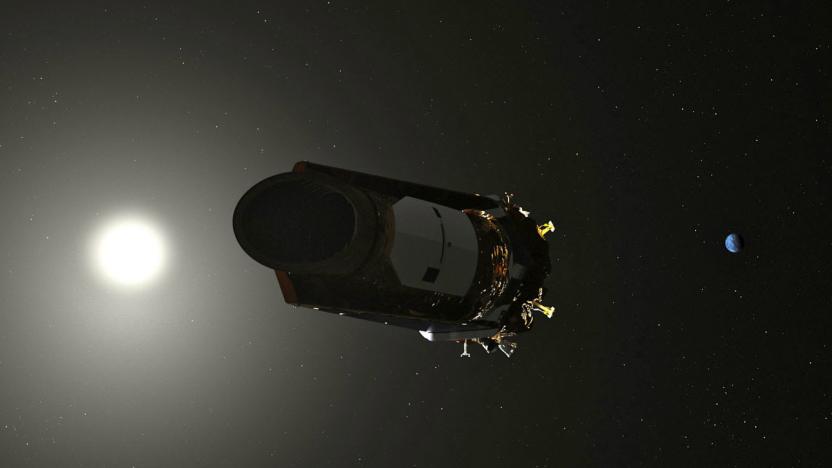
Kepler beams back final image from its almost decade-long journey
NASA bid a bittersweet farewell to its Kepler spacecraft in October. During its nine-and-a-half year journey, the space telescope spotted more than 2,600 planets outside of our solar system. Not bad for a mission that was initially expected to last 3.5 years. And retirement didn't stop it from beaming back additional discoveries in the new year, among them a previously overlooked gas-rich world similar to Neptune, a super Earth and a Saturn-sized body orbiting a Sun-like star. But now the space agency has shared Kepler's "last light" image taken on September 25th. NASA claims the view marks the craft's final record before it ran out of fuel roughly a month later.
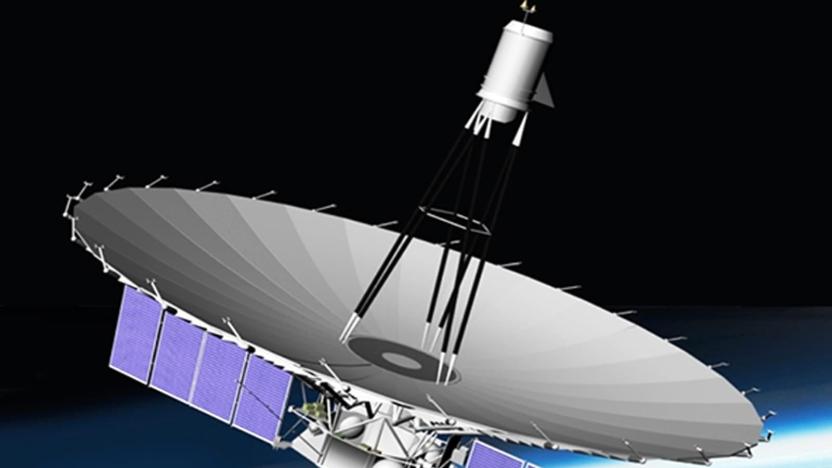
Russia lost control of an orbiting radio telescope (updated)
Russia's astronomy program is facing a significant setback. The country's orbital Spektr-R radio telescope has stopped responding to commands since January 11th. While it's still transmitting signals, the satellite effectively can't be used for future tasks in its current state. The space agency Roscosmos said it would next try to regain control and fix issues on January 13th at 2PM Moscow time (6AM Eastern), but it's not clear what would happen after that.

Hubble flies through the Milky Way's 'raucous star nursery'
Over the past 28 years, the Hubble Space Telescope has inspired a generation of astronomers with insanely dramatic views of the universe, but it's hardly done blowing our minds. NASA has unveiled a new fly-through video of the Lagoon Nebula. Located in the center of the Milky Way, NASA calls it a "raucous star nursery" full of dust and star formation with "Herschel 36," a star 200,000 times larger than our sun, at its center.

NASA pushes James Webb Space Telescope launch to Spring 2019
If you're counting down the days until NASA's Hubble replacement takes off, you'll have to count a bit longer. The James Webb Space Telescope was due to launch around a year from now. But, there seems to be (another) holdup. The aeronautics agency is blaming the delay on the remaining integration of spacecraft parts taking "longer than expected." As a result, the launch date is now being pushed to Spring 2019, specifically between March and June of that year. NASA assures that the rescheduled lift off is not due to any "hardware or technical performance concerns."
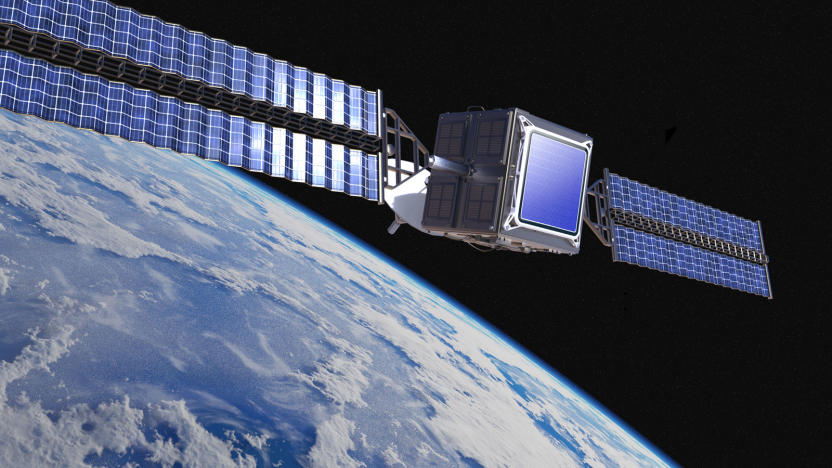
Lockheed Martin previews a future of tiny space telescopes
Current space telescopes are... big. You can't really avoid it given the need for giant lenses and bulky sensors. Lockheed Martin wants to fix that -- the aerospace firm has just released the first images from SPIDER (Segmented Planar Imaging Detector for Electro-Optical Reconnaissance), an optical instrument that promises pictures as sharp as what you'd get from a space telescope in a sensor that's just an inch thick. Instead of using a handful of monolithic lenses, it relies on a legion of small lenses whose data is divided and recombined using a photonic circuit. The initial results aren't spectacular, but they hold a lot of promise.
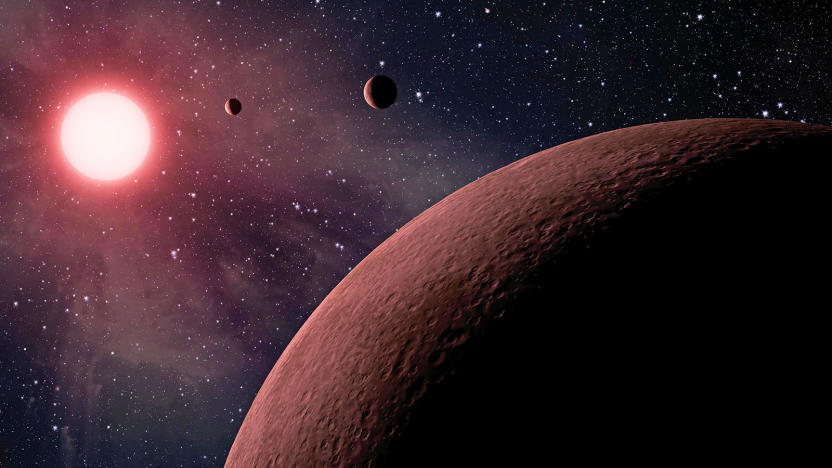
NASA found ten Earth-size planets with conditions ideal for water
Remember when everyone went nuts over the seven Earth-like planets the Spitzer telescope found back in February shortly after Trump was inaugurated? If you're still keen to leave, NASA has released a batch of 219 recently-discovered planet candidates -- including ten near-Earth size that orbit in their star's habitable zone.

Lights out on a ghostly James Webb Space Telescope inspection
The James Webb Space Telescope (JWST) might be the most important scientific instrument ever developed. It'll peer back in time over 13 billion years to the early universe and look for signs of life around the recently discovered TRAPPIST-1 planetary system.
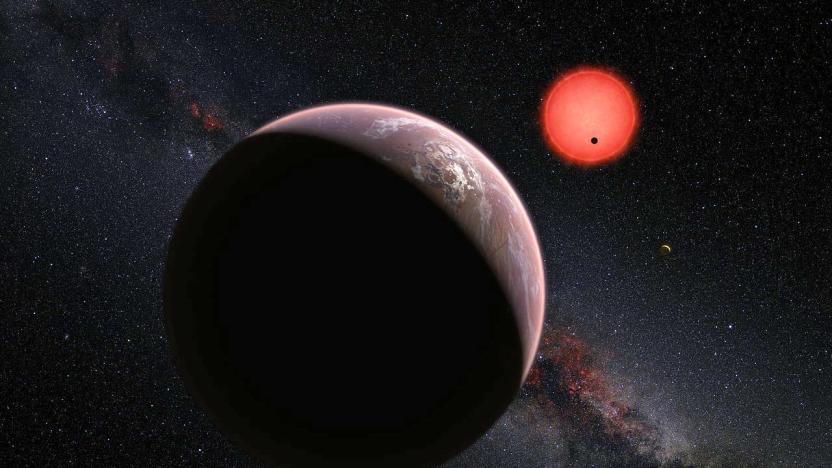
Three Earth-sized planets exist in the Aquarius constellation
It's the dawning of the age of Aquarius. Well, the discovery of three planets orbiting a cooler-than-the-Sun dwarf star located in the Aquarius constellation, according to NASA. A number of telescopes, including the TRAPPIST at the La Silla Observatory in Chile were used in this trio, and the star itself bears the name TRAPPIST-1 for pretty obvious reasons. The planets are Earth-like in size and two of them orbit the star roughly every 1.5 and 2.4 days. The third one has proven a bit harder to track, with NASA saying its orbit is anywhere between 4.5 to 73 days.
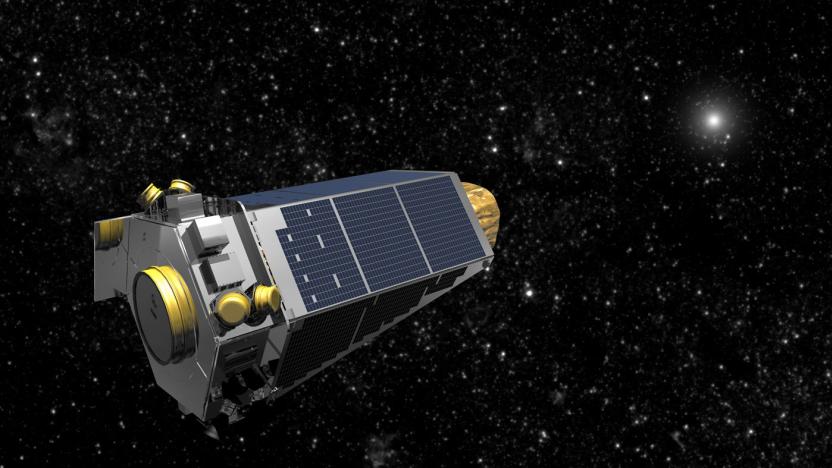
NASA's Kepler space telescope is back in good health
You can breathe again, space fans -- NASA has returned the Kepler space telescope to normal after a nerve-wracking weekend spent in an emergency mode. It's still not clear what triggered the crisis (a planned maneuver wasn't at fault), but the team plans to double-check systems for the next week before carrying on with its extended mission. Let's just hope this doesn't happen again. Kepler barely managed to survive its first big incident, and there's no guarantee that it'll be so lucky the third time around.
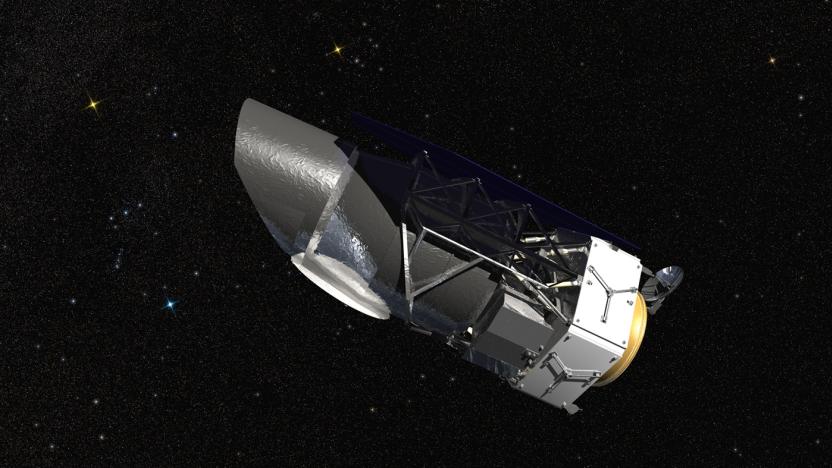
NASA's next space telescope sees 100 times more than Hubble
As much as the Hubble Space Telescope has done to shine a light on the darkest corners of the universe, it doesn't hold a candle to what's coming next. NASA has started work on WFIRST (Wide Field Infrared Survey Telescope), a space observatory with a field of view 100 times larger than that of Hubble -- if the old telescope was a porthole, the new one is a giant window. It's also designed to block the glare of individual stars, making it easier to determine the chemical makeup of exoplanets.

Gamma ray map offers best view yet of our galaxy's energy
Space is full of gamma rays and other intense forms of energy, but you've only ever had a partial picture of it. Ground-based telescopes can only see so much, and even the Fermi space telescope (designed to catch these energies) has missed out on a lot of it... until now, that is. NASA has posted a much more complete gamma ray map using 6 years' worth of refined Fermi data. The result is a far more detailed and comprehensive view of the energy 'bright spots' (between 50 billion to 2 trillion electron volts) in the Milky Way galaxy and beyond. The pretty picture you see above includes the leftovers of supernovae, pulsar wind nebulae and even galaxies whose supermassive black holes make them detectable from millions of light years away.

NASA finds distant galaxy shining as bright as 300 trillion suns
Ever tried looking at the sun with your bare eyes? Too bright, right? Now imagine looking at something with the brightness of 300 trillion suns. That's how intense "the most luminous galaxy found to date" is, so much so that NASA has created a new classification for it and the 19 other similar galaxies it has discovered: extremely luminous infrared galaxies, or ELIRGs. Scientists have recently spotted the ELIRGs in infrared images of the sky taken by the agency's Wide-field Infrared Survey Explorer (WISE) space telescope in 2010. This particular one is located 12.5 billion light years away, which means it started forming soon after the universe was born 13.8 billion years ago. As for why it's so incredibly brilliant, NASA JPL scientist Chao-Wei Tsai says it "may be from the main growth spurt of the galaxy's black hole."

Astronomers accidentally discovered the brightest pulsar on record
Remember NuSTAR, the specialized space telescope NASA designed specifically to study black holes? It just found something much, much brighter. Astronomers at NASA have stumbled upon what appears to be the most luminous pulsar ever discovered, but they almost mistook it for a black hole. After measuring the dead star's output, they found it was outputting as much energy as 10 million suns -- shockingly powerful, considering how much smaller it is than our own star. Astronomers aren't sure why the pulsar is so bright, but will continue to study in hopes of learning how common or uncommon this kind of pulsar is. The discovery kind of shakes up what theorist knew about black holes and ultraluminous x-rays, underlining how little we really know about the universe out there. Check out NASA's gallery of images at the source link below.

NASA discovers 715 alien planets by looking for them in groups
We know that it's no longer rare to discover alien worlds, but NASA just made it downright commonplace. The space agency has confirmed the existence of 715 exoplanets discovered using the Kepler space telescope, ballooning the number of verified planets to nearly 1,700. Scientists validated the huge number of celestial bodies by looking for targets in batches -- the more objects were clustered together, the more likely it was that there would be multiple exoplanet candidates. The bonanza helps illustrate the frequency of planets among the stars, and it has also uncovered four more potentially habitable worlds. Researchers might not be much closer to finding the Holy Grail of a life-bearing planet, but they'll at least know where to focus their attention.

DARPA tests ground-based prototype of its folding space telescope (video)
Researchers want higher-resolution images of the Earth from space, but glass-based telescopes won't always be up to the job; eventually, the necessary hardware will be too bulky to lift into orbit. It's a good thing, then, that DARPA recently tested a ground-based prototype of its MOIRE (Membrane Optical Imager for Real-Time Exploration) folding telescope. Like the future spaceborne unit, the ground telescope replaces glass with a high-efficiency polymer membrane that weighs one seventh as much and collapses into compact shapes. The optics would launch at a diameter of 20 feet, but they would expand to 68 feet. That's larger (and likely sharper) than what you'll see at many Earthbound observatories for quite some time. DARPA hasn't committed to a launch date for its folding design, but the finished device could image 40 percent of our world in one shot -- a major advantage for defense planners who may literally need to see the bigger picture.

ARKYD space telescope reaches its funding goal, new add-ons await (video)
And communal space astronomy is go. Planetary Resources has successfully hit the $1 million crowdfunding target for its ARKYD telescope, which should now be on track for its promised 2015 launch. The project has also racked up 11,000 backers, and that means a new round of add-ons for the extra-committed. Backers can buy a special mission patch ($7), additional selfie photos (from $25) and even a half-size ARKYD replica ($650). There are a few more pragmatic reasons to invest, of course -- the company has stretch goals that could bring a second ground station, selfies during the beta phase and even hunts for undiscovered planets. Would-be researchers who still want to pitch in can visit Kickstarter by June 30th.

NASA gives planet-hunting TESS space telescope go-ahead for 2017 launch
NASA's Kepler space telescope hasn't exactly been a slouch when it comes to planet hunting, but that effort will soon be getting a considerable boost courtesy of a new mission selected by NASA as part of its Explorer program. Dubbed the Transiting Exoplanet Survey Satellite (or TESS), this new space telescope will one-up Kepler with the ability to perform an all-sky survey (an area 400 times larger than previous missions) to search for transiting exoplanets, with an eye towards planets comparable to Earth in size. TESS was developed by an MIT-led team, and will be placed in what they describe as a new "Goldilocks" orbit, allowing it to travel close enough to the Earth every two weeks for a high-speed data downlink while still remaining safely beyond the harmful radiation belts. It's now set for launch in 2017, when it will be joined by the Neutron Star Interior Composition Explorer (NICER), an addition to the International Space Station also selected as part of the Explorer program last week that will use a process called X-ray timing to study neutron stars.

Earth's largest telescope gets to work in Chile after 30 years of planning
Nestled within the Chilean Andes, the new Atacama Large Millimeter-submillimeter Array (ALMA) is now open for space-staring business. The biggest, most complex telescope project to date, ALMA will be able to peer into the deeper reaches of space with "unprecedented power", according to astronomer Chris Hadfield. Covering around half of the universe's light spectrum, between infrared and radio waves, the new telescope should be able to detect distant planets, black holes and other intergalactic notables. The Chilean desert's lack of humidity was a big reason for the telescope's placement, 16,400 feet above sea-level, aiding precision of the scope. But it's a global project, with the US contributing $500 million and making it the NSF's biggest investment ever. From Japan, Fujitsu's contribution to exploring the final frontier consists of 35 PRIMERGY x86 servers, tied together with a dedicated (astronomy-centric) computational unit. The supercomputer will process 512 billion telescope samples per second, which ought to be more than enough to unlock a few more secrets of the cosmos.

Crowd-funded group building asteroid-mapping telescope, saving Earth (video)
Just when you're numbing to robot, zombie and nuclear apocalypse scenarios, some old-fashioned asteroid paranoia pops up to surprise you. The B612 Foundation, which gets funding from, well, anyone, has just announced plans to launch Sentinel, a space telescope which will wander the vacuum cataloging asteroids in our inner solar system. Their goal is to track asteroid orbits and predict large impacts up to 100 years in advance, giving us plenty of time to find a solution (or enjoy our final days). Construction doesn't start til late fall, with the launch expected in around five years, so it won't be any use in disproving the 2012 doomsday believers out there. You can find out more about the project and donate to the foundation at the source link, or jump past the break for a video explanation, Aerosmith not included.

NASA's black hole-hunting NuSTAR mission launched today
The black hole-hunting telescope NASA announced last month launched from Kwajalein Atoll in the central Pacific Ocean today. The $165 million NuSTAR mission will spend two years scouring the universe for black holes by scanning X-ray light at higher energies than its predecessors. According to Space.com, NuSTAR will especially target high-energy regions of the universe where "matter is falling onto black holes, as well as the leftovers from dead stars after they've exploded in supernovas." Head on past the break for a video of the launch and click through to the source link for more details and images.










